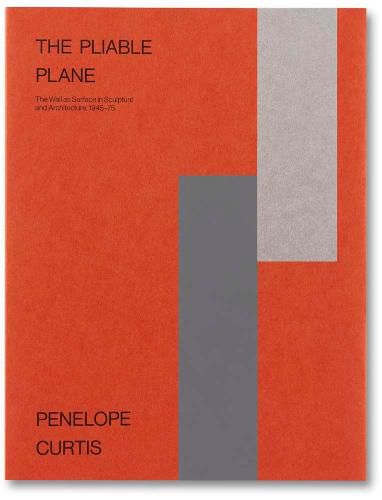Readings Newsletter
Become a Readings Member to make your shopping experience even easier.
Sign in or sign up for free!
You’re not far away from qualifying for FREE standard shipping within Australia
You’ve qualified for FREE standard shipping within Australia
The cart is loading…






In ‘The Pliable Plane’, curator and historian Penelope Curtis traces the ways sculpture infiltrated architectural thought over the post-war period. Her study identifies the wall as a particular locus of creative thinking - a surface which produces both continuity and separation, and which similarly unites and distinguishes the two disciplines. Surveying a series of walls - carved, cast, applied, imagined, and even conceptual - in such places as bomb shelters, caves, war memorials, and public buildings, Curtis introduces a cast of renowned and lesser-known practitioners who defined the three-dimensional conception of the years 1945 to 1970.
With close readings of the work and lives of Henry Moore, Anni Albers, Frederick Kiesler, Jorge Oteiza, and Mary Martin, among others, Curtis’s fluid and perspicacious history encompasses the developments of wartime production, the discovery of the Lascaux Caves, and the rise of relief art. Turning away from familiar pairings and dichotomies, it considers spaces and surfaces of coalescence and influence. Curtis compels us to understand the wall as support as much as partition, arguing for the centrality of this very pliability to the entwined development of both sculpture and architecture.
$9.00 standard shipping within Australia
FREE standard shipping within Australia for orders over $100.00
Express & International shipping calculated at checkout
In ‘The Pliable Plane’, curator and historian Penelope Curtis traces the ways sculpture infiltrated architectural thought over the post-war period. Her study identifies the wall as a particular locus of creative thinking - a surface which produces both continuity and separation, and which similarly unites and distinguishes the two disciplines. Surveying a series of walls - carved, cast, applied, imagined, and even conceptual - in such places as bomb shelters, caves, war memorials, and public buildings, Curtis introduces a cast of renowned and lesser-known practitioners who defined the three-dimensional conception of the years 1945 to 1970.
With close readings of the work and lives of Henry Moore, Anni Albers, Frederick Kiesler, Jorge Oteiza, and Mary Martin, among others, Curtis’s fluid and perspicacious history encompasses the developments of wartime production, the discovery of the Lascaux Caves, and the rise of relief art. Turning away from familiar pairings and dichotomies, it considers spaces and surfaces of coalescence and influence. Curtis compels us to understand the wall as support as much as partition, arguing for the centrality of this very pliability to the entwined development of both sculpture and architecture.